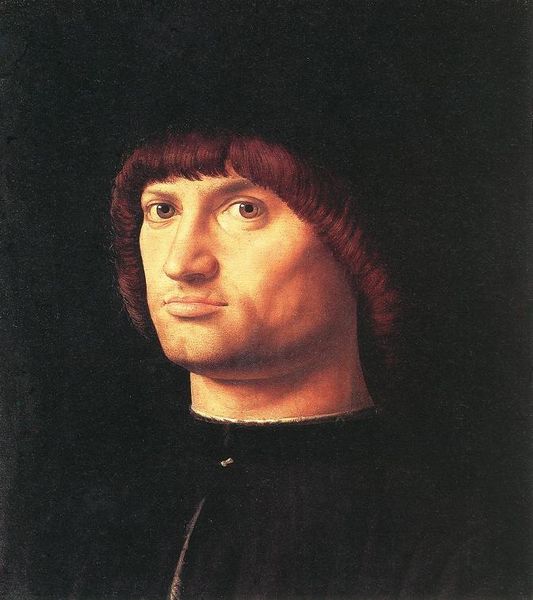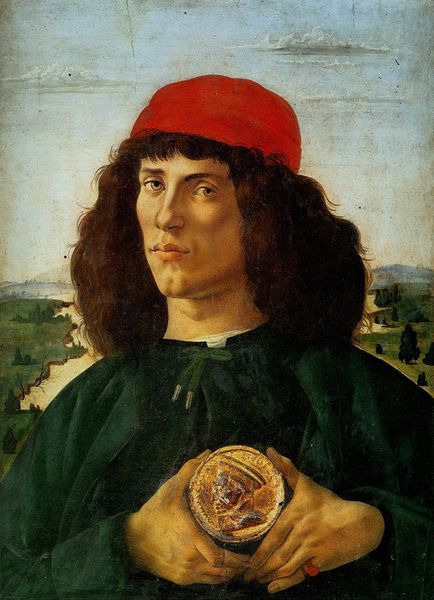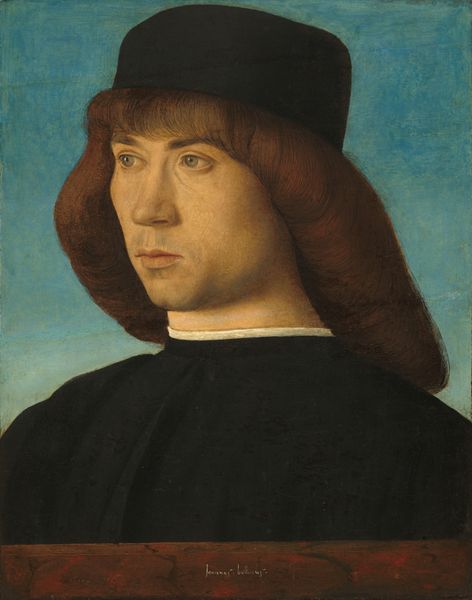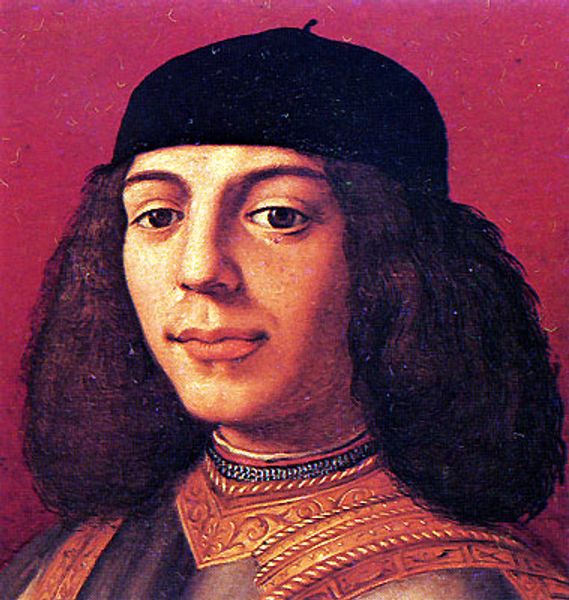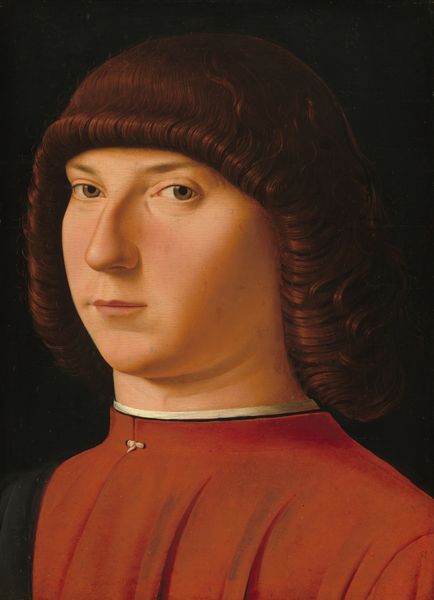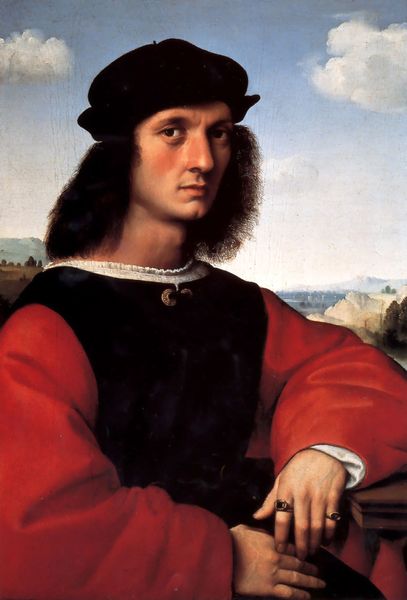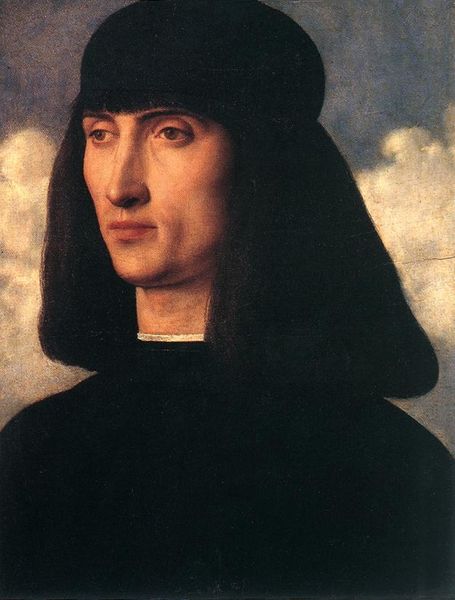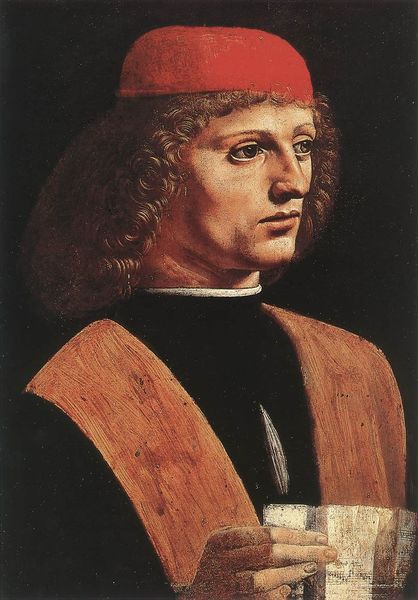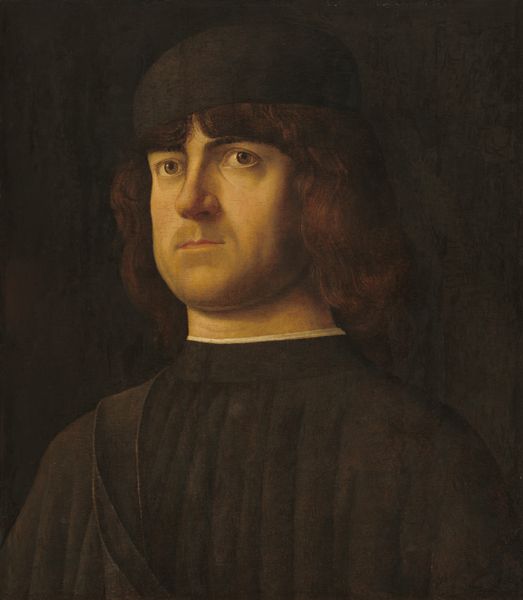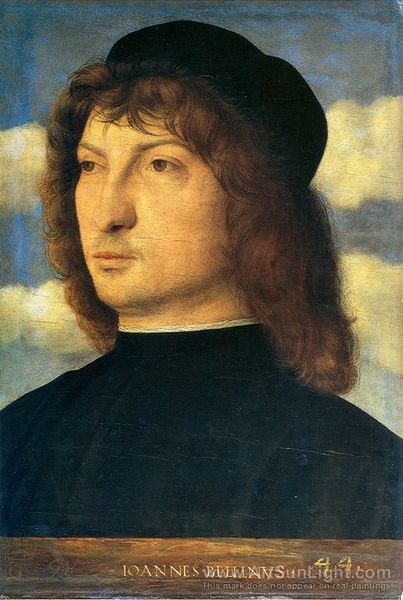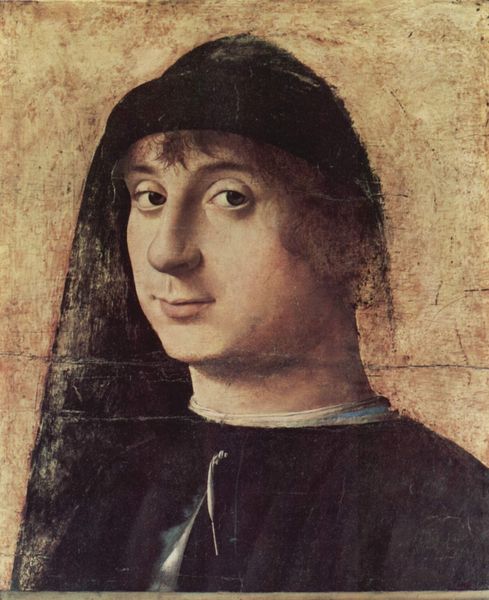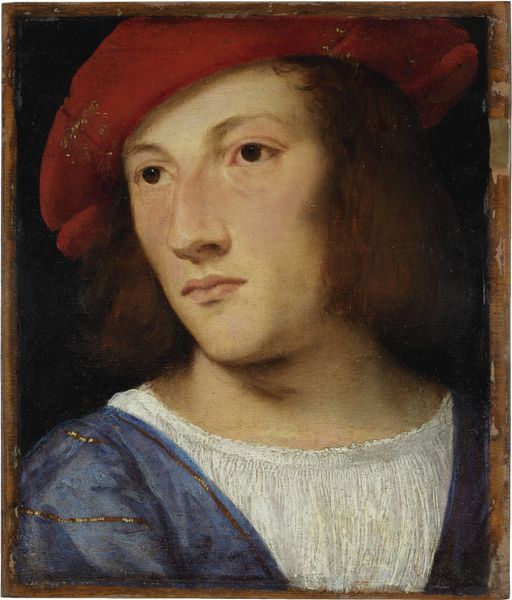
oil-paint
#
portrait
#
self-portrait
#
portrait
#
oil-paint
#
academic-art
#
italian-renaissance
#
realism
Dimensions: 35 x 28 cm
Copyright: Public domain
Editor: This is Giovanni Bellini's "Portrait of a Humanist," painted around 1480. The subject's direct gaze and slightly idealized features give him a real presence. What are your thoughts when you look at this portrait? Curator: This portrait invites us to consider the power dynamics inherent in representation. Who was this person, and what does it mean to be labeled a 'Humanist' in 15th-century Italy? The laurel wreath suggests achievement and status, but also begs the question: achievement for whom? Editor: That's a great point. I hadn't thought about how that label might exclude others. Do you see any connection to contemporary issues when you observe these historical portraits? Curator: Absolutely. The concept of the "Renaissance man," which valorized specific intellectual and artistic pursuits, often overlooks the contributions and experiences of women and marginalized groups. It raises questions about who gets to define knowledge and achievement and how those definitions shape our understanding of history. We have to consider issues of access and privilege. Editor: So, it's about questioning the dominant narratives within art history itself. Curator: Precisely. By interrogating the power structures reflected in these portraits, we can begin to dismantle the canon and create space for more inclusive stories. And how do you feel knowing it is now in a modern art museum? Editor: It feels as if we’re bringing this humanist into the 21st century and giving him a new voice through our conversation. It is not stuck in time, it’s alive. Curator: Yes, and this alive-ness that you pointed to encourages an engagement, as the viewer inevitably projects some form of recognition to the historical image. It may be through style, gender, expression... There are many possible connection points.
Comments
No comments
Be the first to comment and join the conversation on the ultimate creative platform.
